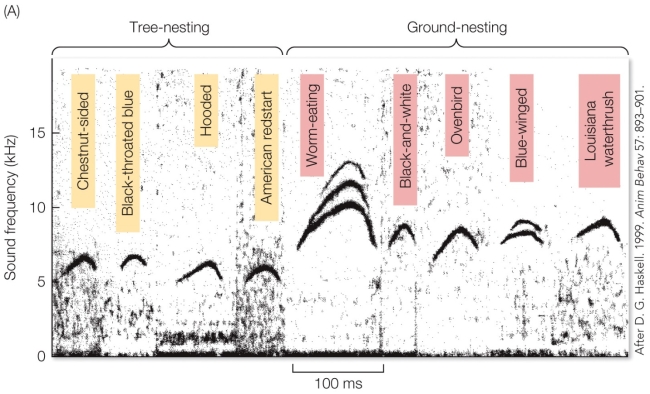Question 10
(Multiple Choice)
Refer to the figure.
 Calls at higher frequencies do not travel as far as calls at lower frequencies. This suggests that the begging frequencies of ground-nesting warblers are
Calls at higher frequencies do not travel as far as calls at lower frequencies. This suggests that the begging frequencies of ground-nesting warblers are
A) an adaptation to evade eavesdropping by predators due to their higher nest exposure.
B) non-adaptive per se, but the by-product of another adaptive trait.
C) an honest signal that communicates the chick's health to its parents.
D) an adaptation that evolved in an ancestor of both tree and ground nesting warblers.
Answer